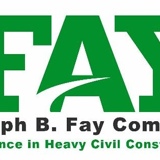General Information
-
Job Number
-
Job Name
-
Job Location
-
Project Superintendent
-
Project Foreman
-
Subcontractors
-
Conducted on
-
Conducted by
-
Additional Attendees:
A. Posters and Records
-
A1. OSHA and EEO posters appropriate and current
-
A2. Emergency numbers posted with directions
-
A.3. OSHA regulations and blank accident reports on site
-
A.4. MSDS accessible and inclusive of job materials
-
A.5. Supervisors holding daily & weekly safety meetings
-
A.6. Site specific reviewed and signed by each employee
B. Housekeeping and Sanitation
-
B.1. General Housekeeping of Jobsite
-
B.2. Is area provided for waste and trash?
-
B.3. Is waste/trash regularly removed from Jobsite?
-
B.4. Materials of all types properly stacked
-
B.5. Hoses, cables, and cords routed away from traveled routes
-
B.6. Nails removed from scrap lumber
-
B.7. Toilet facility adequate and clean
-
B.8. Adequate supply of drinking water
C. Fire Protection
-
C.1. Are "No Smoking" and "Flammable" signs posted?
-
C.2. Fire extinguishers present in trailers, vehicles, fueling stations, and equipment. Are they current?
-
C.3. Are approved containers used for flammables
-
C.4. Are containers / cylinders properly labeled
-
C.5. Are containers stored in approved fuel boxes
-
C.6. Fuel tanks doubled walled / diked and protected from collision?
-
C.7. Fire extinguisher stored at least 25' but no further than 75' from fueling stations
D. First Aid / CPR
-
D.1. First aid kits available in all trailers and company vehicles
-
D.2. First aid kits well stocked
-
D.3. Supervisor on site trained in first aid / CPR
E. Personal Protective Equipment
-
E.1. Safety glasses with side shields being worn by all employees, subcontractors, and suppliers on site
-
E.2. Approved hard hats, with bill facing forward, being worn by all employees, subcontractors, and suppliers on site.
-
E.3. Safety-toe boots worn by all supervisors and employees employed for one year or longer
-
E.4. Face shield being worn when needed (chipping, grinding, chop saw, chain saw, blow pipe, etc.)
-
E.5. Chaps used when running chainsaw
-
E.6. Metatarsal guards used with whackers and air tampers
-
E.7. Respiratory protection used when appropriate
-
E.8. Appropriate gloves worn when working with hazardous chemicals, temperatures, and materials
-
E.9. Hearing protection used when working with, or in the vicinity of, loud tools and equipment
-
E.10. Is clothing appropriate (4" sleeves, long pants, etc.)
F. Tools and Equipment
-
F.1. All tools properly inspected before use
-
F.2. Damaged or broken tools tagged out of service
-
F.3. Appropriate tools being used, tools being used as intended
-
F.4. Operative guards on all power tools
-
F.5. Air hose connections properly fastened and secured with whip checks, clips, or wire
-
F.6. Air compressors equipped with safety check valve
-
F.7. All portable equipment secured (tongue lock, wheel removed)
-
F.8. Tow chains adequate on trailers, compressors, etc. Do the hooks have safety latches?
G. Electrical and Utilities
-
G.1. Assured Grounding Program implemented and current
-
G.2. Cords and tools properly used and protected
-
G.3. GFCIs on outlets and generators functioning properly
-
G.4. Overhead and underground utilities identified with warning signs
-
G.5. Proper distance maintained from electrical lines - 10' min 50kV or less and 4" for each additional 10kV (Non Crane Operations)
-
G.6. Distribution boxes covered and marked
H. Access and Walking / Working Surfaces
-
H.1. Stairs, ramps, or ladders installed at breaks in elevation greater than 19"
-
H.2. Stair riser height and tread depth uniform within 1/4"
-
H.3. Handrails provided on each unprotected edge of stairways having 4 or more risers or rising more than 30"
-
H.4. Handrails installed 36" high from the face of the tread
-
H.5. 20" provided beyond swing of door on stairway platforms (when door opens directly over stairs)
-
H.6. Stairs free from debris and slippery surfaces
-
H.7. Ladders properly constructed and free of defects
-
H.8. Ladders installed on level surfaces at a 4 to 1 ratio vertical / horizontal and secured from movement
-
H.9. Ladders extend 3' above landing or grab rail provided
-
H.10. Stepladders level and used with spreader locks engaged
-
H.11. 3-points of contact maintained when using all ladders
-
H.12. Job-made ladders constructed properly and with filler blocks
-
H.13. Ramps installed no steeper than 3 horizontal to 1 vertical
-
H.14. Cleats provided every 14" on ramps steeper than 8 to 1
-
H.15. Walking / working surfaces free of trip and slip hazards
-
H.16. Hazards such as plastic sheeting, burlap, concrete blankets, etc. removed from walking / working surfaces as necessary
-
H.17. Adequate lighting in walkways and work areas
-
H.18. Walkways, platforms, and ramps at least 18" wide
-
H.19. Walkway holes / openings properly covered and marked "Hole" or "Cover". Are covers adequately secured?
I. Fall Protection
-
I.1. Employees donning fall protection equipment have been trained in accordance with OSHA standards
-
I.2. 100% fall protection being utilized at 6'
-
I.3. Fall protection systems and equipment properly inspected and maintained
-
I.4. Equipment being worn properly. D-ring between shoulder blades, chest strap 6-8" below trachea, etc.
-
I.5. Fall protection anchorages meet 5,000 lbs.
-
I.6. Guardrail systems installed between 39-45" with no gaps between rails (top, mid, toe) greater then 19"
-
I.7. Warning lines installed 6' from edge, at 34-39" high and flagged or painted every 6' with highly visible material
-
I.8. Employees anchored to prevent free fall greater than 6'
-
I.9. Are wire rope clips installed properly on cable systems
-
I.10. Protection provided on projection hazards (rebar, all-thread, etc.)
-
I.11. Toe boards 3-1/2" high installed for falling object protection
J. Traffic Control
-
J.1. Certified Traffic Control Supervisor on site
-
J.2. Flagger(s) certified (training card present) and performing duties properly
-
J.3. All construction signage visible and properly secured
-
J.4. All workers wearing min. class 2 vest, shirt, or jacket. Are they in good condition?
-
J.5. Employees protected by crash trucks where needed
K. Welding and Cutting
-
K.1. Proper IR eye protection in use, #5 min. face shield, glasses, or goggles for cutting, #10 shade min. for arc welding
-
K.2. Gauges, valves, torches, and lines in good condition and free from grease and oil
-
K.3. Cylinders (oxygen, acetylene, propane, etc.) not in use capped and secured upright
-
K.4. Anti-flashback valves installed at gauges. Are covers in place on gauge faces?
-
K.5. Is stored oxygen separated from fuel / gas / oil by 20' or a 5' fire barrier
-
K.6. Fire extinguishers at welding or cutting areas, are they current?
-
K.7. Flammable materials removed from the hot work area
-
K.8. Welding leads undamaged within 10' of cable end
-
K.9. Acetylene operated at no greater than 15 psi
-
K.10. Fuel gas cylinder valves opened no more than 1-1/2 turns
-
K.11. Adequate ventilation provided
L. Heavy Equipment and Vehicles
-
L.1. Are all operators qualified / competent for the piece of equipment / machinery being used
-
L.2. Seat belts being utilized
-
L.3. Is equipment being operated at safe speeds
-
L.4. Equipment used per manufacturers specifications
-
L.5. All loads, buckets, forks, blades lowered to ground or other surface when the operator is not present in the equipment
-
L.6. Horns and back-up alarms working properly
-
L.7. Spotters utilized, as needed
-
L.8. Engines off when refueling / lubricating
-
L.9. Vehicle / equipment cabs free of excessive trash, dirt, and debris
-
L.10. Windows clean and undamaged
-
L.11. Equipment in good working order and operated safely
-
L.12. Manuals in all equipment or on site
-
L.13. Owners card, insurance card, accident report, camera, first aid kit, and fire ext. in each registered vehicle
-
L.14. Security club being used on all vehicles parked overnight
-
L.15. All drivers have approved MVR
-
L.16. Company Vehicle Policy being followed
-
L.17. Orange beacon light and construction sign on company vehicles entering and exiting highway work zones
M. Trenches and Excavations
-
M.1. Excavation checklist completed by competent person
-
M.2. Utilities contacted and located prior to digging
-
M.3. 24" tolerance zone being observed around all suspected utilities, no mechanical digging performed within zone.
-
M.4. Trenches deeper than 5' properly sloped, benched, or protected
-
M.5. Access / egress provided in excavations deeper than 4' and within 25' of employee travel
-
M.6. Spoil piles, tools, and equipment placed at least 2' from excavation
-
M.7. Trench box no greater than 2' from bottom of trench and extending at least 18' above ground, when required
-
M.8. Walkways used when crossing over excavations greater than 30"
-
M.9. Walkways equipped with approved guardrails when crossing over excavations deeper than 6'
-
M.10. Tabulated data sheets on site for trench box
-
M.11. Excavation free of hazardous atmospheres and standing water
N. Crane and Rigging
-
N.1. Daily and annual inspection current
-
N.2. Operator qualified, CCO
-
N.3. Crane set up level within 1 degree
-
N.4. Blocking / cribbing adequate size min. 4" thick with no span blocking > 1"
-
N.5. Swing radius barricaded from entry and free from personnel / equipment while crane is in operation
-
N.6. Tires completely free of ground when outriggers are used
-
N.7. Operation manual and load chart in cab
-
N.8. Rigging equipment in a safe condition and stored properly
-
N.9. Rigging equipment of sufficient capacity for lift
-
N.10. Safe rigging techniques being used to prevent loss of load
-
N.11. Taglines used on all overhead loads
-
N.12. Sharp edges protected to prevent sling damage
-
N.13. Is material rigged to center of gravity
-
N.14. Are working safety latches installed on all hooks
-
N.15. Are employees kept clear of suspended loads
-
N.16. Proper hand signals / communication being used to control cranes movement
-
N.17. Proper distances maintained from all overhead obstructions
-
N.18. 20' maintained on all lines < 350kV and 50' on all lines >350kV
O. Marine Activities and Working Over or Near Water
-
O.1. 30" ring buoy provided every 200' with at least 90' of line
-
O.2. Air horns located with ring buoys
-
O.3. Life saving skiff available and readily accessible
-
O.4. Does skiff contain a fire ext., ring buoy, air horn, life jackets, anchor, retrieval hook, first aid kits, and oars?
-
O.5. Skiff operator properly trained and daily inspection completed.
-
O.6. Life jackets / work vests worn by all employees where there is a potential for downing. Are they properly zipped / fastened?
-
O.7. 3' clear area maintained on the outer perimeter of all floating plants
-
O.8. All barge obstructions painted with high-visibility paint
-
O.9. Spud holes and deck hatch covers properly covered and secured
-
O.10 Barges free of water and loaded adequately
-
O.11. Man-overboard drills completed as needed
-
O.12. Jacobs ladder extending to water level provided on each floating plant
-
O.13. All floating equipment properly secured, ropes in good condition
P. Pile Driving and Drilling
-
P.1. Hammer lowered while leads / crane being moved
-
P.2. Hammer blocked or secured when working under it
-
P.3. Personnel clear of piles being hoisted into leads
-
P.4. Pile heads cut square and free of frozen material or debris
-
P.5. Lead feet securely anchored during battered pile installation
-
P.6. Lead gates or template being provided to control pile in leads
-
P.7. Hearing protection worn while driving piles
-
P.8. Fall protection provided around drilled holes / caissons
-
P.9. Surrounding area / excavation safe against vibration hazards
Q. Silica and Concrete Work
-
Q.1. Engineering controls being used to minimize silica exposure
-
Q.2. Dust masks / respirators being worn where dust is created
-
Q.3. All non-required personnel clear of silica dust area
-
Q.4. Eating, drinking, and smoking performed outside of silica dust area
-
Q.5. Wash station on site and available in immediate work area
-
Q.6. Skin protected while working with wet concrete or dust
R. Confined Space Work
-
R.1. Training performed in accordance with OSHA Standards
-
R.2. Monitoring being performed for atmospheric hazards
-
R.3. Entry permit completed and authorized prior to entry
-
R.4. Attendant positioned at entry portal and is portal protected
-
R.5. Rescue equipment on site and procedures established, local rescue team notified
-
R.6. Ventilation being provided, as needed
-
R.7. Communication established between entrants and attendant
-
R.8. Accurate count / log maintained of personnel within space
-
R.9. Combustion engines and flammable materials stored away from space
S. Lead Work
-
S.1. Lead paint chip analyzed before beginning work
-
S.2. Lead trailer or wash station on site and available in immediate working area. Is the lead trailer adequately stocked with rags, water, soap, duct tape, clean lead suits, etc.
-
S.3. All lead burners medical surveillance and training up to date
-
S.4. Curtains or doors installed between lead trailer rooms
-
S.5. Container provided for dirty lead suits, lid closed at all times
-
S.6. "Lead Contaminated Clothing" sign posted
-
S.7. Lead exposure monitoring conducted for each task
-
S.8. "Lead Work Area" sign(s) posted prior to burning
-
S.9. Lead suits and respirators worn properly
-
S.10. Engineering controls being used to minimize exposure
-
S.11. All non-required personnel clear of lead fume area
-
S.12. Eating, drinking and smoking performed outside of lead work area and only performed after appropriate cleaning
T. Subcontractors
-
T.1. Site specific safety document reviewed and signed by each subcontractor employee
-
T.2. Fay policies are being followed
-
T.3. Weekly safety meetings being held and collected by Fay superintendent
JB Fay Summary Sheet
JB Fay Summary Sheet
-
Tools/Equipment Removed From Service
-
Items Issued by Safety Personnel
-
Remaining Safety Issues
-
All Remaining Safety Issues Corrected
-
Date All Remaining Safety Issues Corrected
Signatures
-
Safety Personnel
-
Superintendent/Foreman













